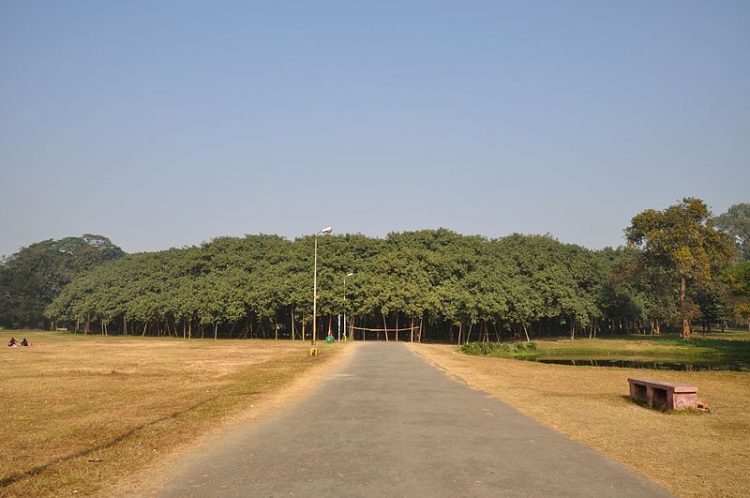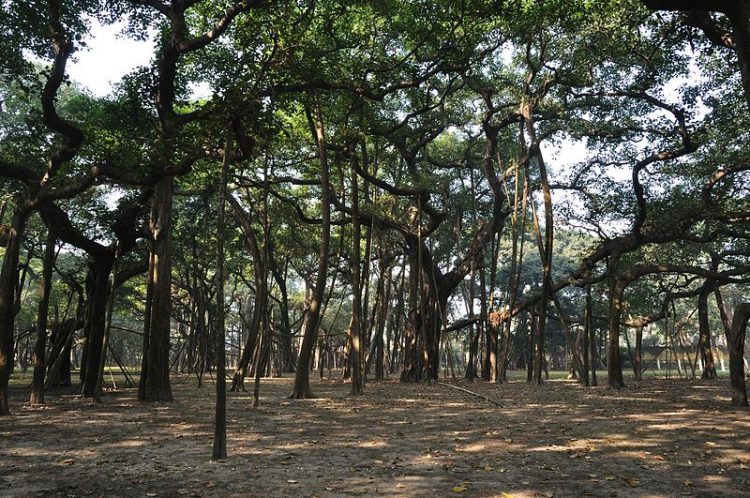If you were to see the Great Banyan Tree in the Acharya Jagadish Chandra Bose Indian Botanic Garden from a distance, you could be forgiven for mistaking it for a forest. Spanning more than 14,493 square meters, the tree is the widest in the world—so large that it covers more ground than the average Wal-Mart.
No one is quite sure exactly how old the Great Banyan Tree is due to a lack of official records, but experts estimate that the tree is at least 250 years old; the earliest references to the tree have been found in travel writing dating all the way back to the 19th century. Over the years, the tree has been through a lot. Not only has it survived 2 major cyclones in 1864 and 1867, but its main trunk was also infected with a deadly fungus. This infection meant that the main trunk of the tree needed to be removed in 1925.

Photo: Biswarup Ganguly/Wikimedia Commons
Despite going through such a major surgery, the Great Banyan Tree proved resilient and continues to thrive. This is thanks to thousands of aerial roots that grow from the tree’s branches and go into the ground. This is what gives the impression of a full forest rather than a single tree.
“In 30 years, The Great Banyan Tree has grown over two acres,” explains Arabinda Pramanick, the joint director of the botanical garden. “The first boundary was built around the tree in 1985 and the second one in 2015. We have some open space around it for it to grow further.”

Photo: Biswarup Ganguly/Wikimedia Commons
Taking care of this massive tree is so complicated that it takes a 13-member team. Not only do they ensure the tree stays healthy, but they also “train” the roots to grow correctly:
“We make a bamboo channel by splitting bamboo poles and putting fertilisers in them. We then direct the tender prop roots into the bamboo channel positioned at such an angle that it can support the overhead branch. Soon the prop roots grow and attach themselves to the ground, supporting the branch. We then discard the bamboo channels,” explains M.U. Sharief, joint director of the Botanical Survey of India.
In Indian culture, banyan trees are among the most venerated. It is considered to be a sacred tree in various religions; for example, in Hinduism, it symbolizes longevity and represents the divine creator, Brahma. In Buddhism, banyan trees are also significant because it is believed that Buddha sat beneath one for 7 days after achieving enlightenment.
Want to see The Great Banyan Tree for yourself? The botanical gardens are easily accessible by car or bus from the Kolkata city center. The best time to visit is sometime between September and March; by this time, the scorching summer heat should have subsided. As well as The Great Banyan Tree, you can also see a wide variety of exotic plants from all around the world, making it an amazing journey to embark on.






